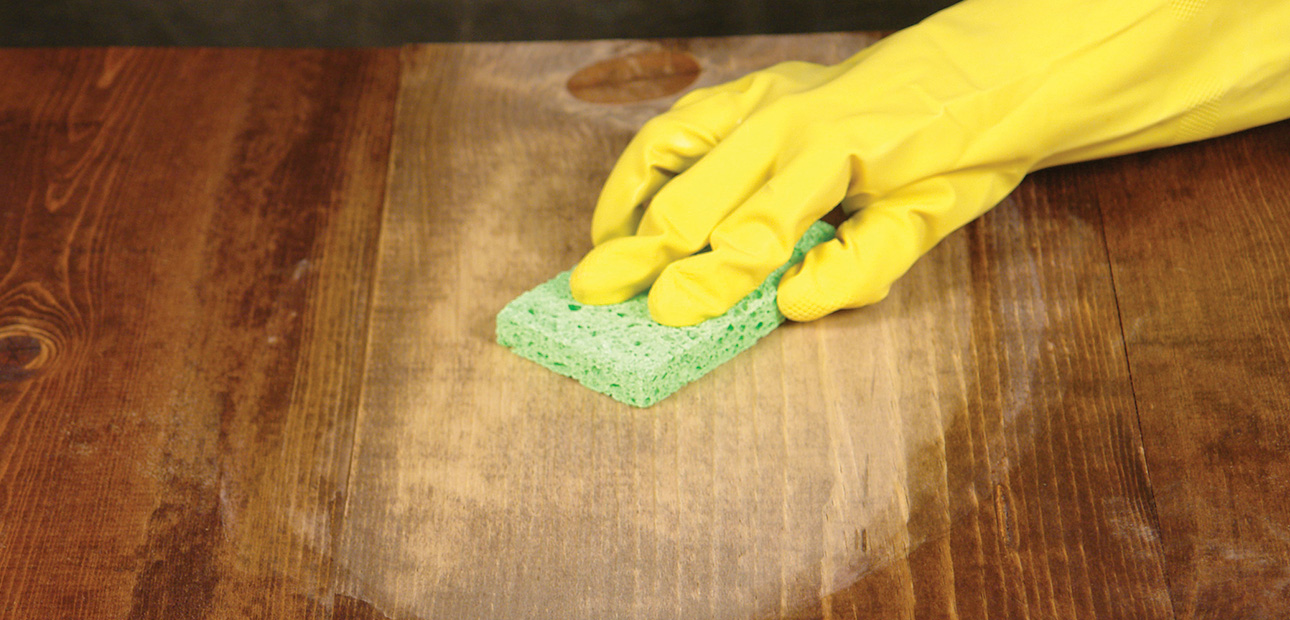How Do You Bleach Wood?
Bleaching wood lets you lighten its color, change its appearance or prepare it for further refinishing. If you are fixing old furniture or just want to refresh wooden surfaces, wood bleach may be what you need.
Before you get started, it’s important to understand how wood bleach works and the best surfaces to use it on.
What Is Wood Bleach?
Wood bleach is a chemical solution that lightens the color of wood while preserving its natural texture and grain. It removes or reduces natural stains in the wood grain. It also helps with discoloration from age, water damage or old finishes.
Why Use Wood Bleach?
There are several situations in which wood bleach might be the right choice for your project.
- Refurbishing an antique piece of furniture that has darkened over time.
- Giving floors, tables or cabinetry a lighter appearance.
- Correcting uneven discoloration caused by water or smoke.
- Removing an old finish to prepare wood for a new stain or finish.
Types of Wood Bleach
Three different products can be used to bleach wood. Each product serves a specific purpose.
1. Two-Part Wood Bleach (A/B Bleach)
Two-part wood bleach solutions are ideal for lightening surfaces like trim, paneling, floors and furniture. The process involves two steps — saturating wood with the “A” product and then applying the “B” product over it. After letting it dry, use sandpaper to remove the residue and reveal lighter wood.
Zinsser Wood Bleach is a kit that includes the A and B solutions. It can be used to bleach new or stripped wood to give it a lighter, more uniform color. It can also be used to brighten all wood surfaces.
2. Oxalic Acid Bleach
Oxalic acid bleach can remove dark stains, such as those caused by water damage or rust. It’s often used to restore weathered wood or old furniture. Oxalic acid bleach is a powder that needs to be dissolved in water before being applied to the wood. After treatment, the wood surface must be neutralized with warm water.
3. Chlorine Bleach
Clorine bleach is a standard household bleach. It can be diluted and then lightly scrubbed onto wood to lighten stains. You can use chlorine bleach to spot-treat stains. However, use it with caution. Too much bleach can harm wood fibers and damage the surface.
What Wood Surfaces Can You Bleach?
Not all wood types and surfaces are suitable for bleaching. Some surfaces respond well to wood bleach, but others can be damaged or not come out as expected.
Here’s a look at which surfaces you generally can bleach.
- Unfinished solid wood. Unfinished wood without varnish or stain is best for bleaching. The bleach can soak into the surface evenly.
- Furniture. Desks, chairs, tables, and other furniture made from solid wood are popular choices for bleaching. Make sure you thoroughly strip away old finishes before using bleach.
- Hardwood flooring. Hardwood floors, like oak or maple, can be bleached. This helps brighten its look or prepare it for a lighter stain.
- Cabinetry. Kitchen or bathroom cabinets can typically be bleached.
Before committing to bleaching a particular piece of wood, always do a test patch in an inconspicuous area. This will help you gauge the wood’s reaction and ensure you’re happy with the results.
What Surfaces Should You Avoid Bleaching?
- Veneers and laminate. Thin veneers or fake wood laminates are not suitable for bleaching as the chemicals may break down the adhesive or finish, causing damage.
- Softwoods. Softwoods like pine or cedar are absorbent and prone to blotchiness when bleached. If you decide to try bleaching softwood, always conduct a test on a small section.
- Sealed or painted wood. Wood that has been sealed, painted, or varnished should be stripped clean before the bleaching process begins. This helps the bleach penetrate the wood.
- Antiques. Historical antiques or valuable heirlooms made from wood may lose value or character if bleached. Consult an expert before attempting to bleach these items.
Wood Bleach Safety Precautions
Bleaching wood isn’t a difficult process, but it does require attention to detail and proper precautions.
- Wear protective gear. Always wear gloves and safety goggles when working with wood bleach, as the chemicals can be harsh on skin and eyes.
- Work in a well-ventilated area. Bleach fumes can be strong, so it’s important to work in an open or well-ventilated space.
- Follow instructions. Different wood bleach products have different requirements. Always read and follow the product label for best results.

